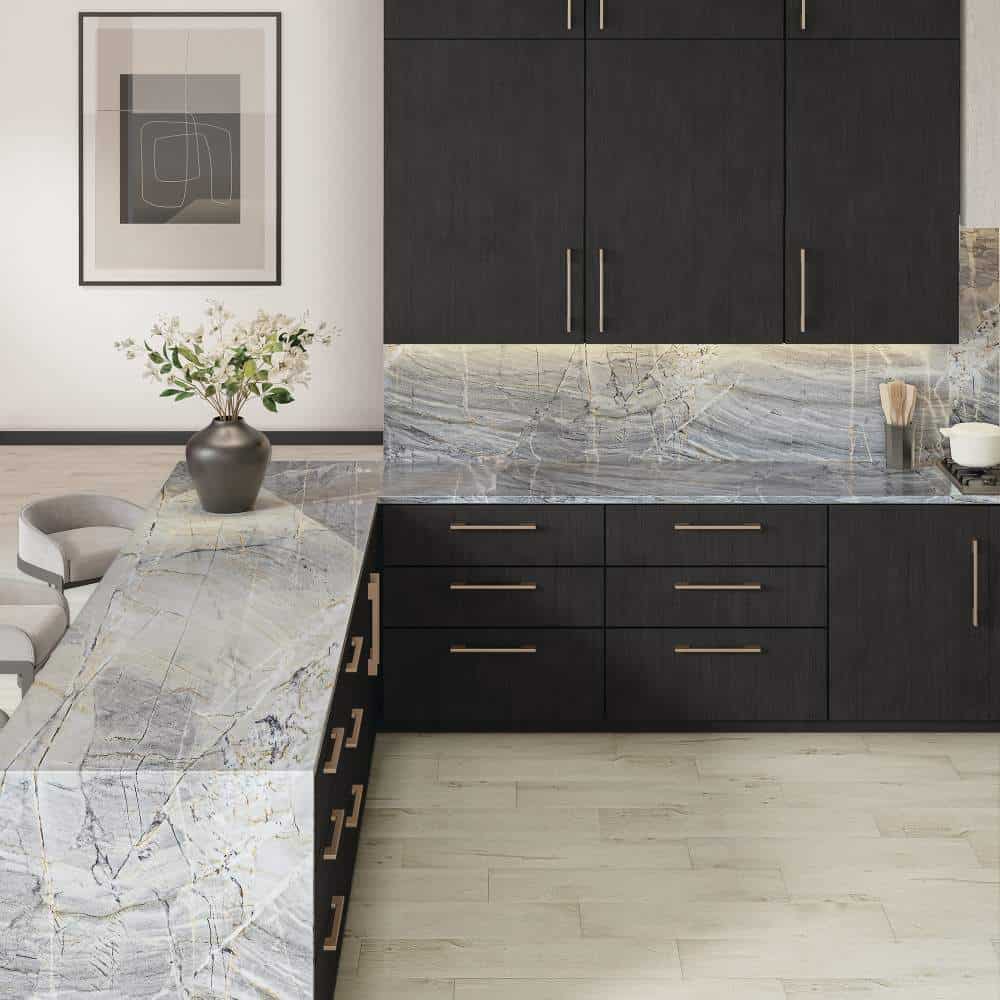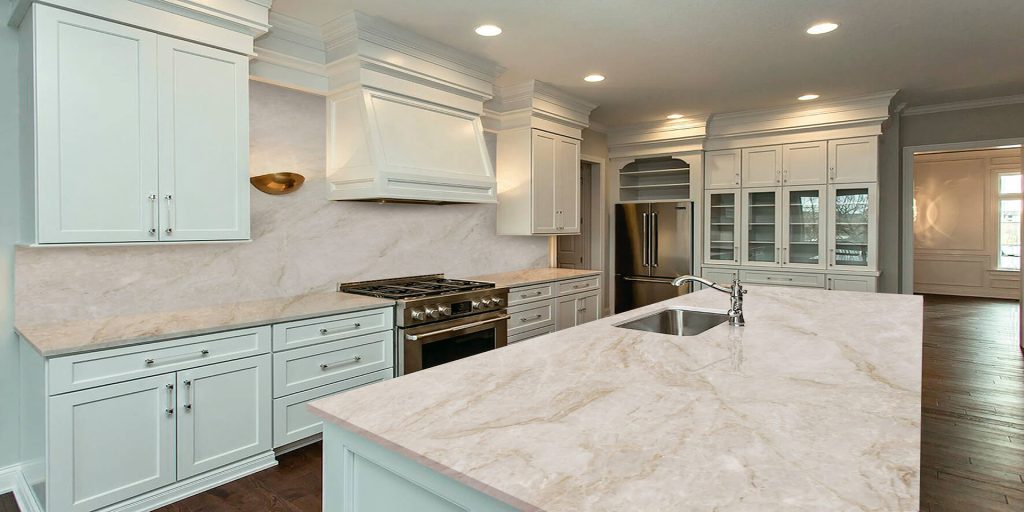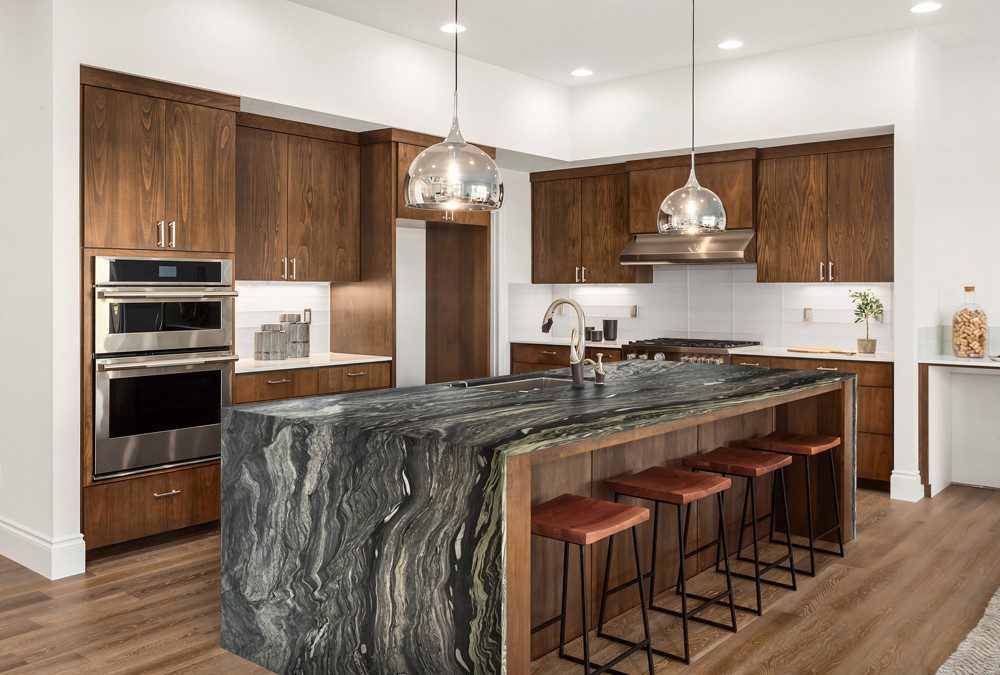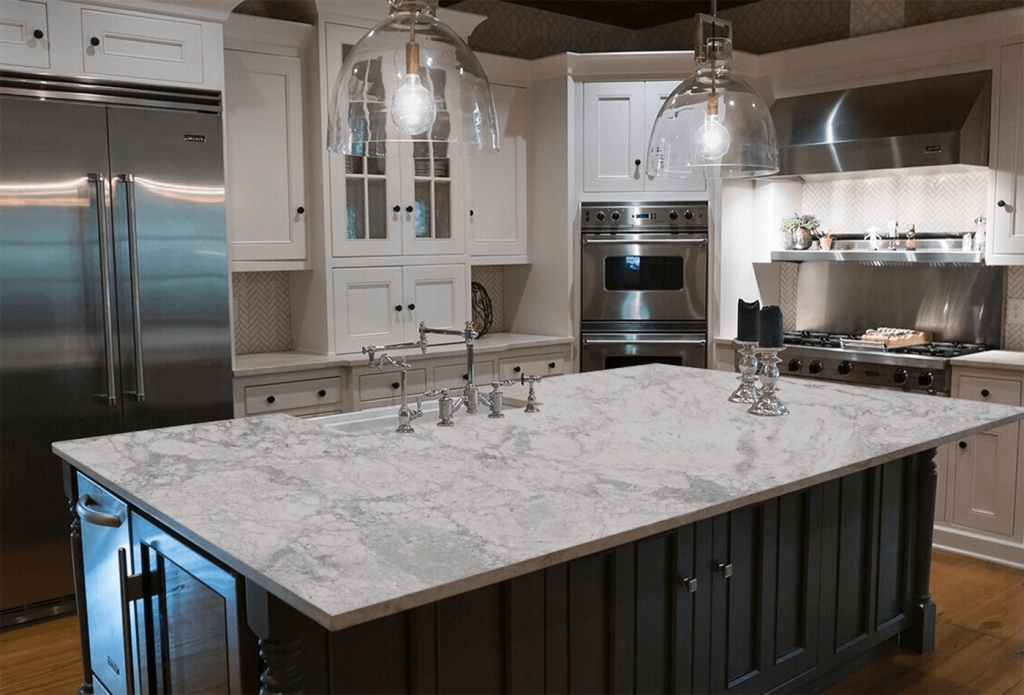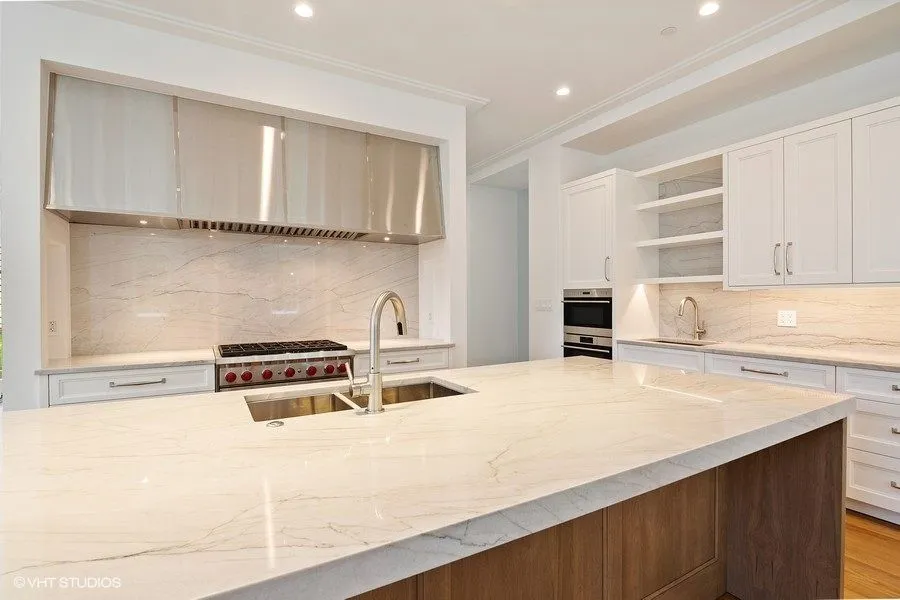Pairing Quartzite With Wood Cabinets Best Color Combos
Quartzite countertops bring the perfect balance of natural beauty and durability to kitchens. When paired with the right wood cabinet tones, quartzite can transform a space from simple to show-stopping. But with so many wood stains and quartzite patterns to choose from, selecting the right combination can feel overwhelming.
This guide breaks down the best quartzite + wood cabinet color pairings — whether you want a clean, modern look or a warm, inviting kitchen designed for everyday living.
1️⃣ White or Cream Quartzite + Light Oak Cabinets – Pairing Quartzite With Wood Cabinets Best Color Combos
Perfect for: Scandinavian, coastal, and modern organic styles
Light wood + soft neutral stone = bright, airy elegance.
💡 Great matches:
-
Taj Mahal Quartzite
-
Perla Venata Quartzite
-
Mont Blanc Quartzite
Why it works:
Warm veining in cream quartzites ties beautifully into the natural warmth of oak.
2️⃣ Bold Veined Quartzite + Natural Walnut Cabinets
Perfect for: Modern luxe and dramatic transitional kitchens
Walnut adds depth and richness — the ideal contrast for expressive slabs.
Stunning slab options:
-
Cristallo Quartzite
-
Patagonia Quartzite
-
Quartzite with bold white or gold veining
Why it works:
Walnut’s chocolate undertones make dramatic stone patterns feel sophisticated, not overwhelming.
3️⃣ Soft Grey Quartzite + Cool-Toned Wood Cabinets
Perfect for: Sleek contemporary homes
This combo brings a clean, polished look with subtle color harmony.
Pair with:
-
Avohai Quartzite
-
White Macaubas Quartzite
-
Grey-veined Brazilian quartzites
Wood tones like ash or grey-washed oak keep the palette calm and modern.
4️⃣ Green Quartzite + Natural Maple or Honey Cabinets
Perfect for: Biophilic, coastal, and rustic-modern designs
Green quartzites bring nature inside — and warm wood tones enhance the organic feel.
Try pairing:
-
Amazon Green Quartzite
-
Sea Pearl Quartzite
-
Emerald Mist Quartzite
A little greenery and brass hardware complete the look.
5️⃣ White Quartzite + Dark Espresso Cabinets
Perfect for: Classic elegance with maximum contrast
Dark cabinets make bright quartzite shine as the centerpiece.
Top pairings:
-
Super White Quartzite
-
Cristallo Light Quartzite
-
Arctic White quartzites
This combo feels luxurious — especially with polished finishes and sleek edge profiles.
6️⃣ Beige or Gold Quartzite + Cherry or Mahogany Cabinets
Perfect for: Traditional and timeless kitchens
Warm tones complement each other beautifully and add rich character.
Try:
-
Naica Extra Quartzite
-
Golden Macaubas Quartzite
-
Bianco Superiore Quartzite
Ideal for homeowners who want a classic look with natural warmth.
Design Tips for a Perfect Match
| Factor | What to Consider |
|---|---|
| Veining direction | Line up with cabinet layout for a cohesive look |
| Finish | Honed/leathered blends well with rustic wood; polished suits modern styles |
| Lighting | Warm lighting enhances wood tones and brings out stone veining |
| Hardware | Bronze → warm tones · Chrome/Nickel → cool tones |
| Backsplash | Use quartzite for a seamless look or tile for added texture |
Bring a cabinet door sample to the slab yard — natural materials vary and must be seen together.
Final Takeaway – Pairing Quartzite With Wood Cabinets Best Color Combos
The best quartzite + wood cabinet pairings balance:
-
Contrast
-
Texture
-
Color temperature
-
Natural beauty
Whether you prefer striking drama or soft organic warmth, there’s a quartzite + wood match that will transform your kitchen into a timeless showpiece.

